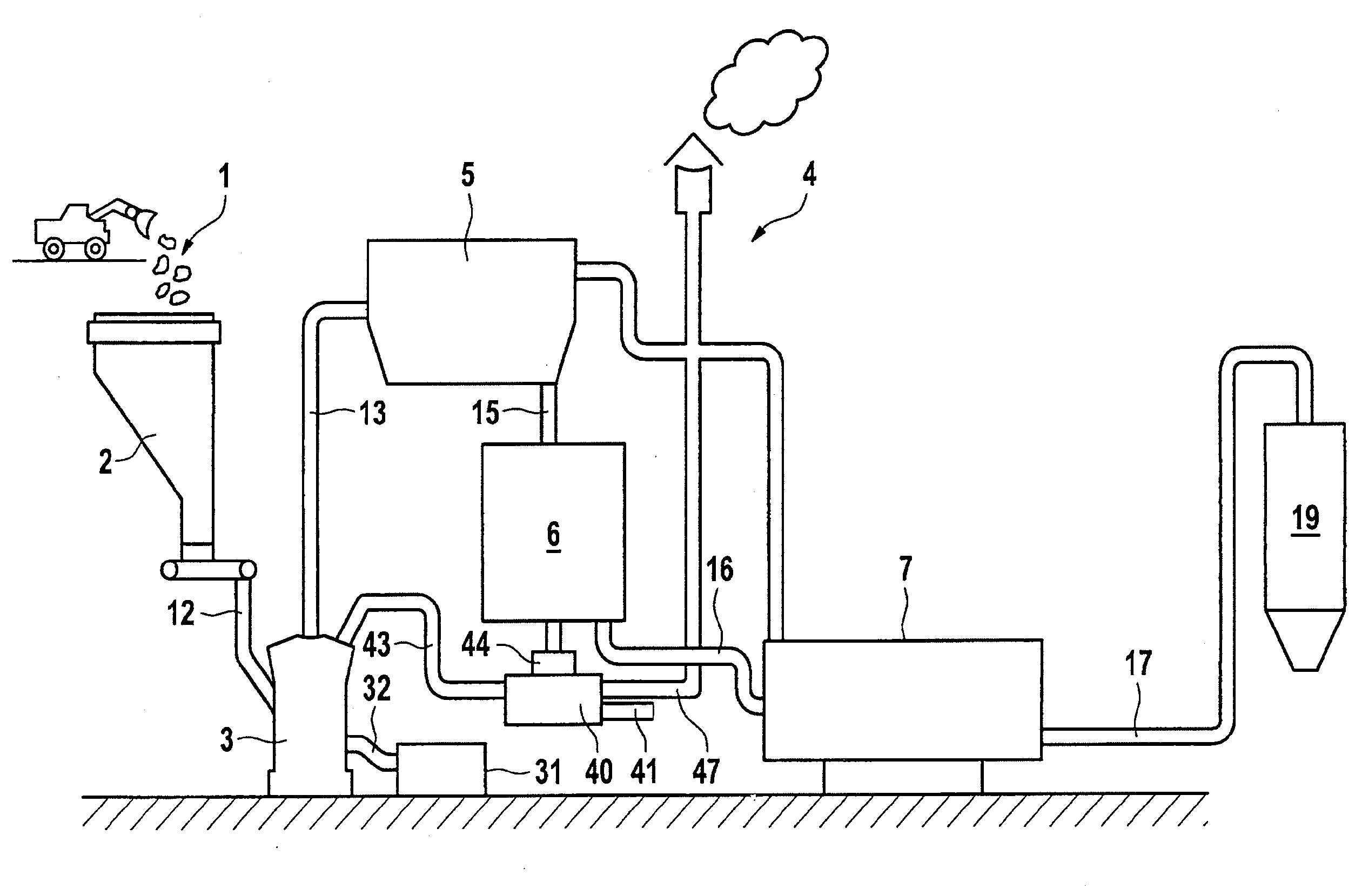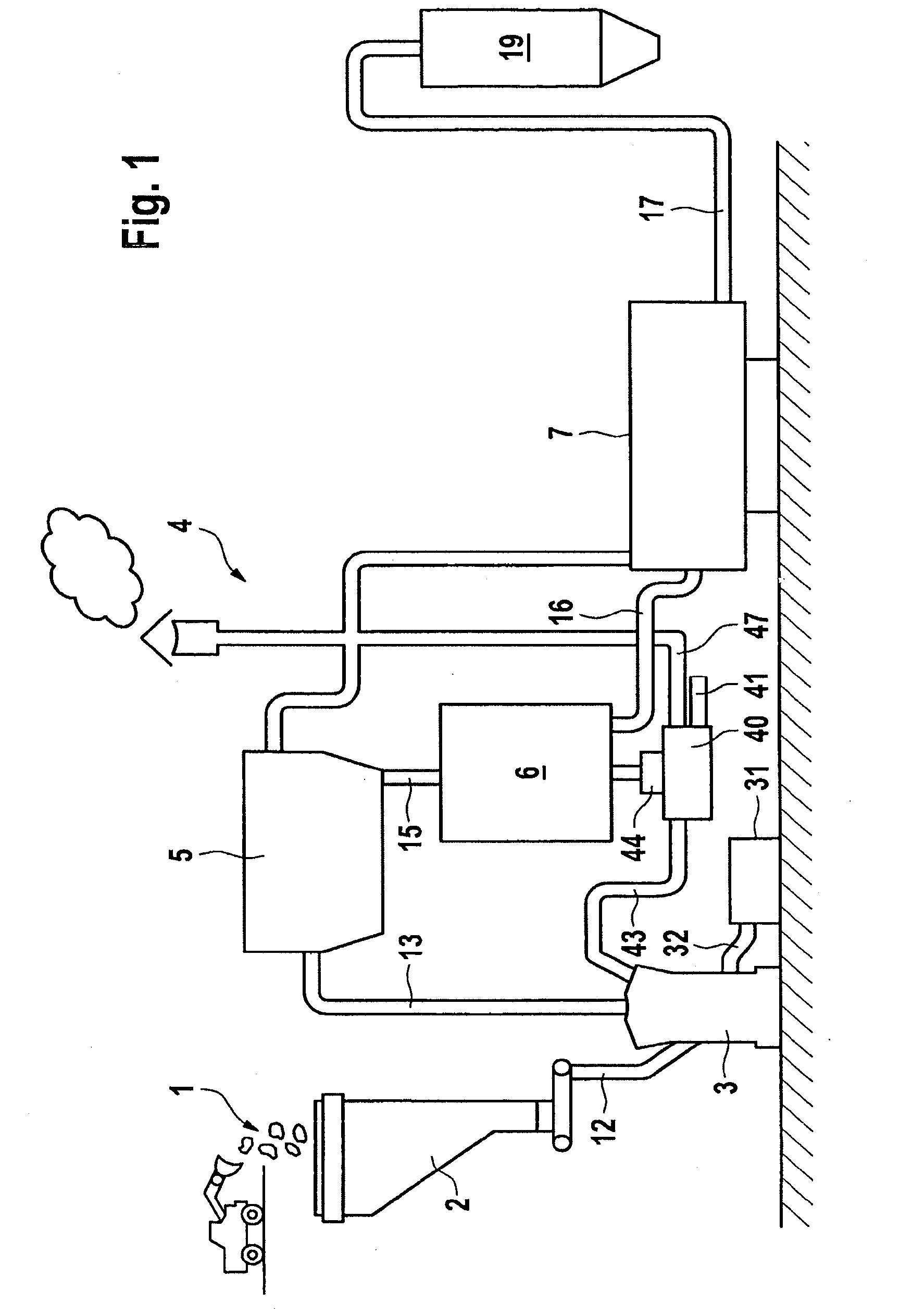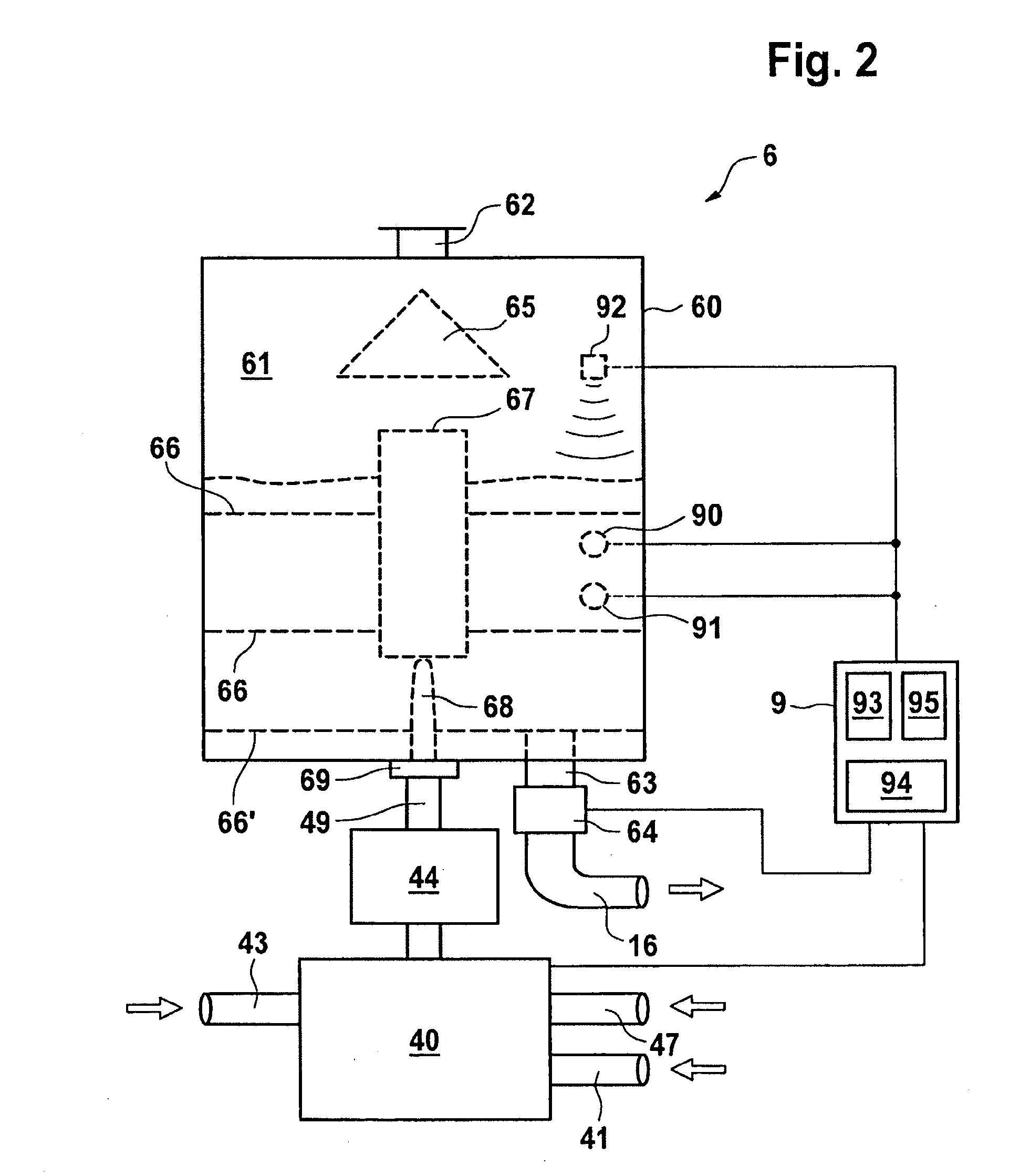Calcination method and system
a calcination method and system technology, applied in the field of calcination methods and systems, can solve the problems of undesired anhydrite (aiii) in gypsum, the energy required for such flash calcination is considerable, etc., and achieve the effects of reducing temperature, increasing product quality, and saving energy
- Summary
- Abstract
- Description
- Claims
- Application Information
AI Technical Summary
Benefits of technology
Problems solved by technology
Method used
Image
Examples
Embodiment Construction
[0036]The device will be explained on the basis of an exemplary embodiment of an installation for calcining gypsum. Raw material for the gypsum to be calcined is introduced into the calcining installation at a charging point 1. The raw material may be, in particular, recycled gypsum products, such as gypsum building boards, and also so-called FGD gypsum from flue gas desulfurization installations (FGD). The application area of the invention is not only restricted to such gypsum but also extends to other types of synthetic gypsum, in particular phosphorus gypsum; however, natural gypsum may also be used. From the charging point 1, the gypsum raw material passes to an upper end of a storage silo 2. This is arranged in an elevated position and is located above a calcining mill 3.
[0037]The material to be calcined—in this case gypsum—is introduced via a line 12 into the calcining mill 3. In the calcining mill 3, the gypsum is comminuted and calcined. The calcination is performed as flash...
PUM
| Property | Measurement | Unit |
|---|---|---|
| dwell time | aaaaa | aaaaa |
| dwell time | aaaaa | aaaaa |
| temperature | aaaaa | aaaaa |
Abstract
Description
Claims
Application Information
 Login to View More
Login to View More - R&D
- Intellectual Property
- Life Sciences
- Materials
- Tech Scout
- Unparalleled Data Quality
- Higher Quality Content
- 60% Fewer Hallucinations
Browse by: Latest US Patents, China's latest patents, Technical Efficacy Thesaurus, Application Domain, Technology Topic, Popular Technical Reports.
© 2025 PatSnap. All rights reserved.Legal|Privacy policy|Modern Slavery Act Transparency Statement|Sitemap|About US| Contact US: help@patsnap.com



